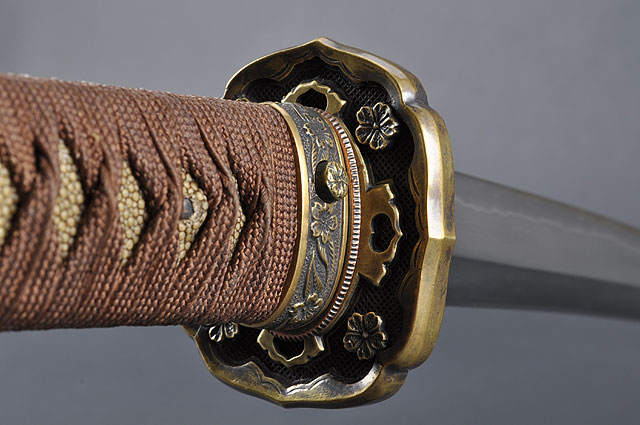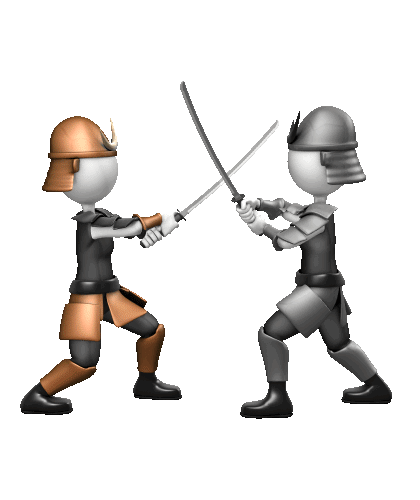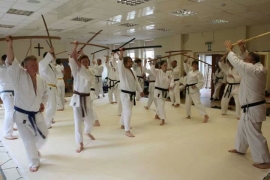Kenshindoryu Iaido and Battojutsu
The Katana, or Samurai sword, traditionally holds great fascination for those who study the Japanese Budo arts, but practice of the sword 'ways' is fragmented. Kendo being a competitive combat sport using bamboo 'swords' (shinai), Iaido concentrating on drawing the sword, Battojutsu promoting tameshigiri (cutting), and so on. However, with a background in Obata Toshishiro's unifying sword art of Shinkendo, Kenshindoryu Battojutsu practices the full range of sword techniques.
Based around the comparatively young sword arts of Toyama Ryu Iaido, taught to the Japanese Army and Nakamura Ryu Battojutsu, both catalogues utilise the 'simplified battle method' which means that all techniques are taught from a standing position, with no kneeling stances.
Sword training is of particular benefit to practitioners of Wadoryu Karate and Jujutsu, encompassing the strategy, movement and evasion techniques in both of these arts.
"Iai to wa, hito ni kirarezu, hito kirazu Jiko no renma ni, shugi no michi."
("Iai: not killing others; not being killed by others. Self training and polishing, the road to discipline and cultivation." )
We conduct training sessions every Tuesday at 8pm, immediately following our Wadoryu Karate session, with the first lesson free. |
|
You can view our current Syllabus Here
Hasshu No Noto
There are various methods of noto, resheathing the drawn sword, of which eight of them are incorporated into the system. The Toyama Ryu technique of guiding only one third or one half of the blade into the scabbard is standardised throughout. This differs from the old-school technique in which the full length of the blade is dragged across the back of the left hand until its tip slips down into the scabbard mouth.
These eight noto are:
1. From yoko ichimon-ji, so named because the sword looks like the horizontal Chinese character "one" [Omori Ryu]..
2. From chiburi, the right hand elevated as it draws the back of the blade across the left hand [Toyama Ryu]
3. Overhand grip from chudan gamae.
4. Overhand grip, after right kesagiri.
5. Overhand grip, after left kesagiri
6. From the reverse-sword position after left kesagiri, blade resting on right knee [Omori Ryu Iaido].
7. From the reverse sword position after right kesagiri, blade on the left knee.
8. From blade forward. Left hand grasps the koiguchi while the blade tip is concentrated on your opponent; then noto.




